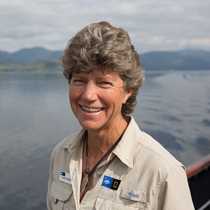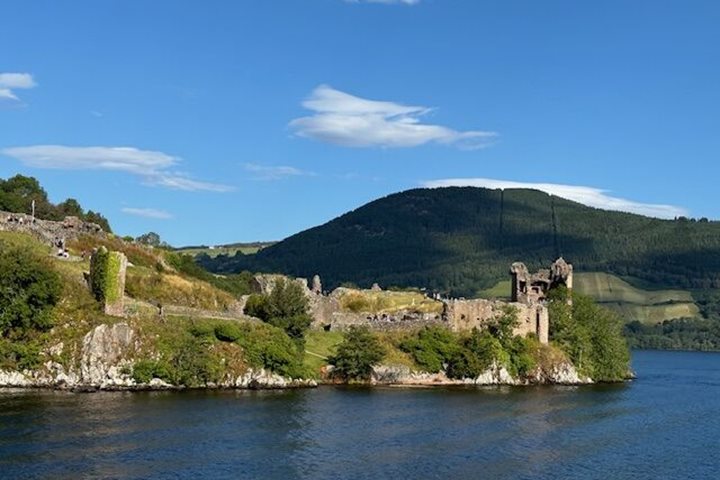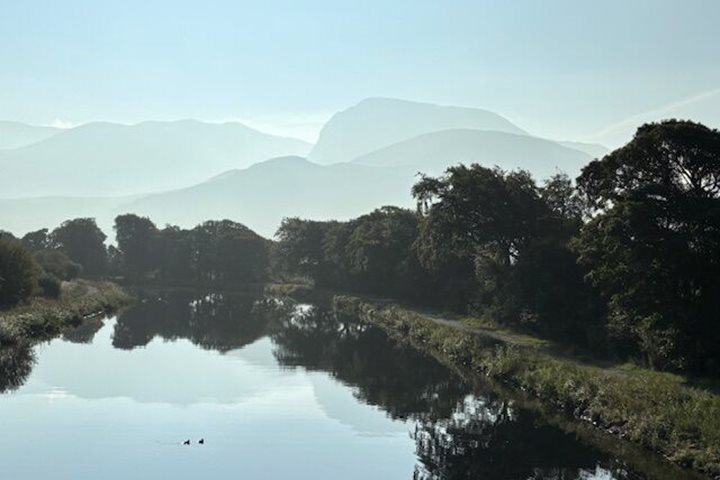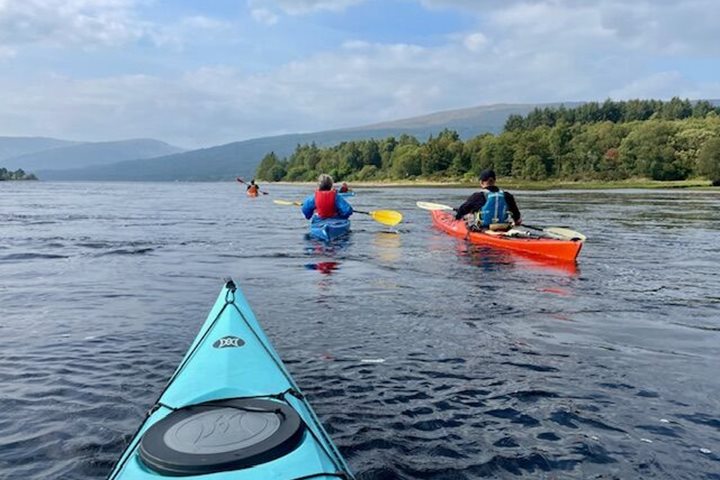Ben Nevis, Great Britain’s tallest mountain, slipped out of view as we started our journey up the Caledonian Canal, departing from Corpoch at breakfast time. Early in the day, Lord of the Glens entered Neptune’s Staircase, a series of eight locks that lifts the boat through a system of gates and rising/lowering water. A few other locks along the way eventually brought the boat to the canal’s highpoint at Loch Oich at 106 ft (32m) above sea level. Today’s canal journey passed through Moy Bridge, the only remaining swing bridge on the canal, constructed in 1828. Moy Bridge is operated by hand, the bridge operator using a small boat to cross back and forth across the canal to crank open the bridge and let the boats pass.
During the trip up the canal, David explained the complex history of the Jacobite uprisings that led to the battle of Culloden and the 19th century Highland Clearances. Robin followed with an environmental history of “The Rise and Fall of the Caledonian Forest,” presenting an overview of the decline of Scotland’s forests since Neolithic times. Even as we learned about Scotland’s history and rich landscape, the scenery passed by, lush and green.
After lunch, many of the group took the opportunity to walk a few miles along the towpath to meet our boat at the day’s final destination of Fort Augustus. This small town was the site of a fort built after the 1715 Jacobite uprising. The town was named for King George II's younger son, Prince William Augustus, the man who later, as Duke of Cumberland, became known as “Butcher Cumberland” due to his brutality in removing and repressing the Highland population after the 1746 uprising. The harsh facts of history were a contrast to our pleasurable stroll along the canal bank on the mild, dry afternoon.
Later in the afternoon, our group split up, some to explore the small town of Fort Augustus, others to kayak with Ian or take another walk with David and Robin. The kayakers had a great time on the canal, paddling about on sit-on-top kayaks in calm water. The walkers ventured out to explore Fort Augustus’ surroundings, the path leading out to the rural landscape of sheep, cows, and stone walls. Along the way, the group passed through the Kilchuimen cemetery, where poet Robert Burns’ close friend John Anderson is buried. There in the peaceful graveyard with its towering yew trees, David read the poem Burns’ wrote for his friend, “John Anderson, My Jo.”
Recap was a gala affair—a whisky tasting! Our hotel manager Andy talked about the making and history of this iconic drink, and everyone had the chance to try three varieties, ranging from a “beginner” to an “advanced” whisky. Not a bad way to cap off a good afternoon. But the day was not done. After dinner, the boat’s crew provided special entertainment, and a first for Lord of the Glens: ukulele and song. So ended another incomparable day in the Scottish Highlands.







